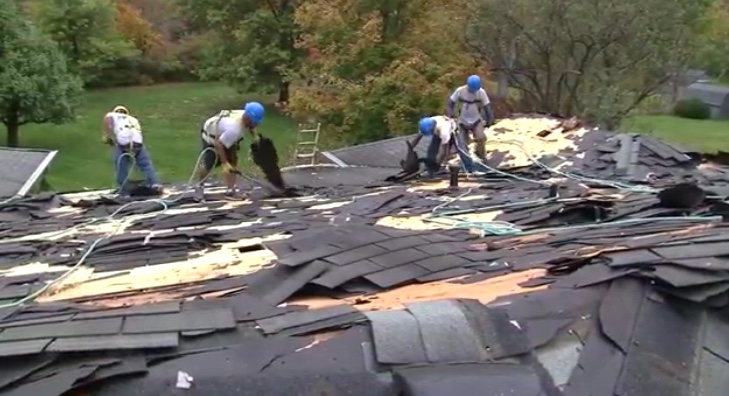What are the Elements of a Roof?

By Quarrix.
It is easy to think of a roof as one object, but a roof is a system of components!
The roof is often conceptualized as a single item; it is after all just called, “the roof.” However, a roof is actually made up of many parts, making a system that works to shelter your home. Knowing how the different parts of your roof work is crucial to making smart, informed decisions for your roof. With modern improvements in materials and ventilation systems, a roof could last as long as 50 years, provided the right choices are made. Here's insight into some key roofing terms that will help you make those decisions.
Slope/pitch
The slope or pitch of your roof determines its level of steepness, or amount of vertical rise per horizontal inch. Your roofer will take measurements to determine the pitch and this number will factor heavily into the roofing materials you’ll need and how your contractor will complete the project.
The pitch of your home's roof can matter greatly. In general, flat roofs are more prone to leaks and need more frequent inspections. Low-pitch roofs tend to accumulate snow and can also be high-maintenance, so it’s important that your contractor uses high-quality products and properly seals around leak-prone areas like penetrations in the roof for plumbing pipes and at the eaves. High-pitch roofs typically don’t have the same snow accumulation problems that low-pitch roofs have but can present different challenges. The moisture runoff rate will be higher, so it’s important to install a good gutter system that diverts water away from the home when it runs off the roof. Also, steeper roofs often take more time to complete and require installers to wear safety harnesses that are anchored into the roof, which can mean a bigger bill for you due to the extra labor costs.
Hips and ridges
Hips on a roof are any sections of the framing structure that come down at an angle off of a horizontal plane like a ridge and they’re typically used to help give your roof dimension. The ridges are the top peaks of your roof that mark the horizontal lines at which two opposing planes meet. Because your ridges create the highest points of your roof, they’re also the best locations for installing your attic ventilation solution. Use an option like ridge ventilation and you'll create a continuous line enabling efficient airflow across the roof while remaining nearly invisible. Some ridge vent products can even be installed on the hips for added ventilation when there is not enough space on the ridge.
Valleys
Valleys are the v-shaped channels on a hip roof where two roofing sections come together. Because of their positioning, they sometimes trap leaves and other environmental debris. This material should be cleared periodically as part of your overall roof maintenance.
Eaves, fascia and soffit
Your eaves are the portions of your roof that meet or overhang your vertical siding walls and the term fascia refers to the boards running along the edge of your roof or eaves. Lastly, the soffit is the protective underside of a roof’s overhang. In many traditional ventilation systems, intake vents are installed at the soffits to work in conjunction with exhaust vents installed at the highest points of a roof.
Gable
A gable is the triangular vertical wall that closes off the ends of the roof. In the past you may have noticed attics that have gable vents installed at the peaks to facilitate cross-ventilation, however better ventilation methods have been identified and are more commonly used today.
Shingles
Here's a term most of us are familiar with. While fiberglass, asphalt or composite shingles are the most traditional roof coverings, there are other options available like Spanish tile, slate, wood shingles and metal. The option you choose will largely influence what roof ventilation system is installed because many ventilation products are only compatible with specific roofing materials. The good news is that there are certain products available that can be installed with almost any roofing material.
Flashing
How about one more term before we go for the day? Let's finish with flashing. Flashing refers to any detailing around high-moisture and leak-prone areas that is designed to keep water out of your home. Some common areas to install flashing include around your ventilation pipes, chimneys, plumbing vents and at the base of vertical walls. In short it keeps the bad stuff out. Flashing is typically made of galvanized steel, aluminum or plastic and can be flexible or rigid depending on the needs of your roof and where you live.
Empowering your roofing decision
We covered several roofing terms today and hope the information you learned will help you consider your options from a point of knowledge when choosing your next roof. It's a big decision, so take your time and don't forget to learn about how Quarrix ridge ventilation can work to your advantage.
Have a question? AskARoofer.
Find your local roofing contractor in the RoofersCoffeeShop® Contractor Directory.
Original article source: Quarrix










Comments
Leave a Reply
Have an account? Login to leave a comment!
Sign In